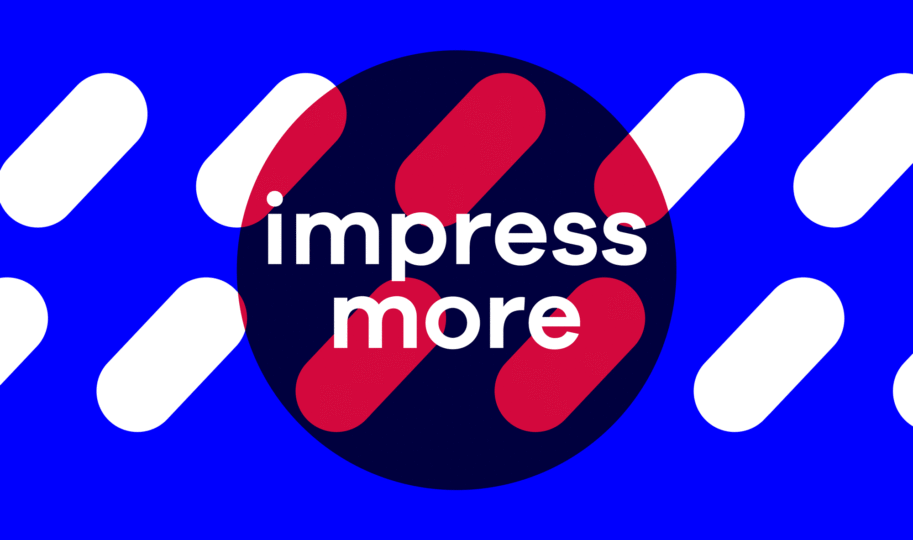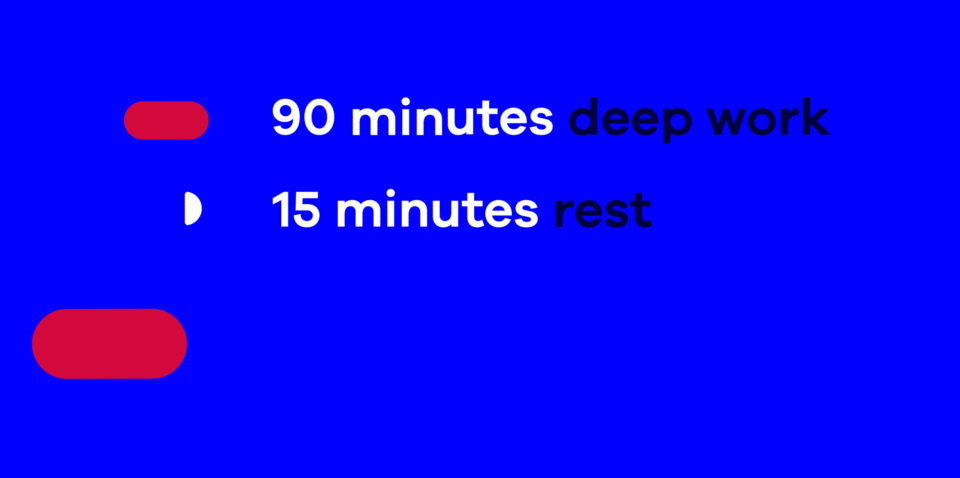Our Associate Creative Director’s attempt at transcending the average 8-hour workday, to the 4.5-hour DEEP PRODUCTIVE workday.

So here it is in short:
- I was addicted to a drug.
- The real reasons notifications are a problem.
- The deep-work approach that can transcend your workday.
- What to practice to make it perfect.
- Now, let’s be realistic.
- Wrapping up.
1. I was addicted to a drug
In case you hadn’t noticed, we’re living in the Notification Age. Ping. Ping. Ping!!! All day every day, and occasionally even throughout the night… These incessant ‘pings’ are attention thieves. They made me completely reactive and altered how I work and communicate. It took me years to realise how my brain had been so badly rewired. But now, thankfully, I’ve ‘seen the light’…
Hi, I’m Adam, and I am a recovering notifications addict. I’m not yet clean, but I’m getting there thanks to consciously implementing a simple, highly-productive workday approach. This daily practice not only improved my work output, it also changed my life.
It’s ironic, I graduated with a creative degree, thrive in the culture of the creative industries, and seek to constantly make my mark within it. Yet, I was starting every single day being reactive. Not creative. Reactive to every single notification on my phone and email. And once those notifications were ticked, I’d seek out things I could react to by engaging in endless thumb scrolling (here’s lookin’ at you Instagram, BBC Sport, Reddit) The problem I gradually woke up to, was that this habitual notification drug was killing my concentration span. I battled to focus on one thing for an extended period because my mind was constantly seeking the next notification ‘hit’. Meaning doing deep productive work went out the window.
2. Here’s why ‘notifications’ are a problem
Studies have shown that receiving notifications lights up the same area of the brain stimulated by highly addictive drugs. True story.
Also, it’s been proven that every task or engagement (notification) has a ‘hangover’ effect. A residue of our attention remains stuck thinking about the previous task or engagement. In fact, Microsoft Research tells us it takes an average of 25 minutes to get back on task after being interrupted by an email notification during the workday. Cal Newport, author of the book, Deep Work, says, “People experiencing attention residue after switching tasks are likely to demonstrate poor performance on the next task, and the more intense the residue, the worse the performance.”
So, notification addiction and its consequences are not far off the real thing…
3. The deep-work approach that can transcend your workday

So, what is ‘deep work’? In short, having the ability to focus on one problem for an extended period without distraction.
Science tells us that to solve a problem with good creative output, we need to focus on said problem for a prolonged period, immersing ourselves in it without distraction. Quality work lies in deep productive work. So, if we hope to be truly productive, we need to retrain our brains to block out the ‘attention thieves’ by taking mindful, conscious action to break our bad habits.
As humans, we work VERY well with short blocks of intensity, rest – repeat. Either 100% in or 100% out. No in-between. In between is wishy-washy. This goes for both physical and mental activity:
If we apply this thought as an approach to our workday, it looks something like this:
- 90 minutes deep work
- 15 minutes rest
- 90 minutes deep work
- 15 minutes rest
- 90 minutes deep work
- 15 minutes rest
90 minutes deep work = no phone, no distractions, no emails
15 minutes rest = taking a walk, making tea, chatting to a colleague, breathwork. Actual recovery. Not something that further saps willpower, like thumb scrolling.
That’s 4.5 hours of work (hence the 4.5-hour workday), 45 minutes of rest.
The #1 thing to apply with this approach: Every day, make CREATIVE work first, and REACTIVE work second.
4. What to practice to make it perfect
So, how do you wean yourself off the ‘drug’? I never used to be able to do this type of deep work. I just simply couldn’t. For years I’d been so attached to my phone and so reactive, immediately responding to notifications, until I implemented systematic rules for phone and social-media usage, and started meditating – the secret to your deep-work success.
Meditation practice is like productive, deep-work exercise training for the brain. It trains our subconscious to get better at focusing on one thing, going into deep work and staying there. But, like everything you want to be good at, it takes a lot of practice.
Practice can extend into social scenarios too. Doing deep productive work with friends and family means having the ability to be totally present with them. Like not looking at your phone every 2 minutes whilst at a restaurant. Not checking IG when it should be family time. A conscious effort of putting our phones on silent, turning off emails, having digital sunsets etc. can help with productivity. But, it’s when we retrain our brain and wean it off the notification dopamine drug, that real productivity can happen.
5. Now, let’s be realistic
Realistically most of us can’t stick to the 4.5-hour workday approach as a solid schedule. We have meetings, and our clients have expectations that, at times, require us to be reactive in order to solve problems quickly. We sit in teams surrounded by awesome colleagues. Giving them the silent treatment for 4.5 hours is pretty harsh, particularly if you’re a team leader. Attempting to suddenly do 90 mins of deep work is also unrealistic if we’re not accustomed to it.
However, it’s a useful tool to understand and flex when the creative output need arises. We can build it up by starting at say, 30 minutes on, 10 minutes off. Alongside that, it’s another beneficial reason to implement meditation practice. As we know, there are many positive reasons for meditation, but sometimes it takes finding one that aligns with a life value to encourage us to make it stick. Make it become a non-negotiable part of our life.
6. Wrapping up
I wrote this blog post in three deep stints over one week in between creative briefs. One deep stint to plan it, one midweek, and the final one today after an energising spin workout. Tonight, when I get home, I’ll have dinner with my better half and chat all things life for one more deep stint. It’s taken some time for me to get to a point where I’m able to do this. I won’t lie, it’s been a tough mental challenge, but I can already see the benefits both inside and outside of work.
Is your thumb itching to scroll? Do you think you, like me, may have a bit of a notification addiction? Why not try weaning yourself of it by giving the 4.5-hour deep productive workday a try? You won’t regret it.